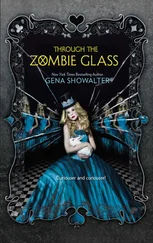

The Greeks treat their women a little better: while their word for girl, korítsi , is, just as you would expect, of the neuter gender, if one speaks about a pretty buxom girl, one adds the augmentative suffix -aros , and the resulting noun, korítsaros , “buxom girl,” then belongs to the… masculine gender. (Heaven knows what Whorf, or for that matter Freud, would have made of that.) And if this seems the height of madness, consider that back in the days when English still had a real gender system, it assigned the word “woman” not to the feminine gender, not even to the neuter, but, like Greek, to the masculine gender. “Woman” comes from the Old English w f-man , literally “woman-human being.” Since in Old English the gender of a compound noun like w f-man was determined by the gender of the last element, here the masculine man , the correct pronoun to use when referring to a woman was “he.”
The habit of European languages to misplace human beings-especially from one sex-in the wrong gender may be the most offensive element about the system. But in terms of the number of nouns involved, this quirkiness is rather marginal. It is in the realm of inanimate objects that the party actually gets going. In French, German, Russian, and most other European languages, the masculine and feminine genders extend to thousands of objects that are by no stretch of the imagination male or female. What, for instance, is particularly feminine about a Frenchman’s beard ( la barbe )? Why is Russian water a “she,” and why does she become a “he” once you have dipped a tea bag into her? Why does the German feminine sun ( die Sonne ) light up the masculine day ( der Tag ), and the masculine moon ( der Mond ) shine in the feminine night ( die Nacht )? After all, in French, he ( le jour ) is actually illuminated by him ( le soleil ), whereas she ( la nuit ) by her ( la lune ). German cutlery famously spans the whole gamut of gender roles: Das Messer (knife) may be an it, but on the opposite side of the plate lies the spoon ( der Löffel ) in his resplendent masculinity, and next to him, bursting with sex appeal, the feminine fork ( die Gabel ). But in Spanish, it’s the fork ( el tenedor ) that has a hairy chest and gravelly voice, and she, the spoon ( la cuchara ), a curvaceous figure.
For native speakers of English, the rampant sexing of inanimate objects and occasional desexing of humans are a cause of frustration and merriment in equal measure. The erratic gender system was the main charge in Mark Twain’s famous indictment of “The Awful German Language”:
In German, a young lady has no sex, while a turnip has. Think what overwrought reverence that shows for the turnip, and what callous disrespect for the girl. See how it looks in print-I translate this from a conversation in one of the best of the German Sunday-school books:
GRETCHEN: Where is the turnip?
WILHELM: She has gone to the kitchen.
GRETCHEN: Where is the accomplished and beautiful English maiden?
WILHELM: It has gone to the opera.
Twain was inspired by German grammar to write his famous “Tale of the Fishwife and Its Sad Fate,” which he pretended to have translated from German quite literally. It begins like this:
It is a bleak Day. Hear the Rain, how he pours, and the Hail, how he rattles; and see the Snow, how he drifts along, and of the Mud, how deep he is! Ah the poor Fishwife, it is stuck fast in the Mire; it has dropped its Basket of Fishes; and its Hands have been cut by the Scales as it seized some of the falling Creatures; and one Scale has even got into its Eye, and it cannot get her out. It opens its Mouth to cry for Help; but if any Sound comes out of him, alas he is drowned by the raging of the Storm. And now a Tomcat has got one of the Fishes and she will surely escape with him. No, she bites off a Fin, she holds her in her Mouth-will she swallow her? No, the Fishwife’s brave Mother-dog deserts his Puppies and rescues the Fin-which he eats, himself, as his Reward. O, horror, the Lightning has struck the Fish-basket; he sets him on Fire; see the Flame, how she licks the doomed Utensil with her red and angry Tongue; now she attacks the helpless Fishwife’s Foot-she burns him up, all but the big Toe, and even SHE is partly consumed; and still she spreads, still she waves her fiery Tongues; she attacks the Fishwife’s Leg and destroys IT; she attacks its Hand and destroys HER also; she attacks the Fishwife’s Leg and destroys HER also; she attacks its Body and consumes HIM; she wreathes herself about its Heart and IT is consumed; next about its Breast, and in a Moment SHE is a Cinder; now she reaches its Neck-He goes; now its Chin-IT goes; now its Nose-SHE goes. In another Moment, except Help come, the Fishwife will be no more…
The thing is, for Germans none of this is even remotely funny. It is so natural, in fact, that German translators struggle to render the passage’s particular brand of humor. One translator solved the problem by substituting the tale with another one, which he called “Sehen Sie den Tisch, es ist grün”-literally “look at the table, it is green.” If you find you are having a sense of humor failure yourself, then remember that what one really ought to say in German is “look at the table, he is green.”
Twain believed that there was something specially debauched about the German gender system and that among all languages it was unusually and peculiarly irrational. But that belief was based on ignorance, because if anything it is English that is unusual in not having an irrational gender system. And at this point, I ought to declare a conflict of interest, since my mother tongue, Hebrew, assigns inanimate objects to the feminine and masculine genders just as erratically as German or French or Spanish or Russian. When I go into a (masculine) house, the feminine door opens onto a masculine room with a masculine carpet (be he ever so pink), a masculine table, and feminine bookcases full of masculine books. Out of the masculine window I can see the masculine trees and on them the birds, which are feminine regardless of the accidents of their anatomy. If I knew more about (feminine) ornithology, I could tell by looking at each bird what biological sex she was. I would point at her and explain to the less initiated: “You can tell she is a male because of that red spot on her chest and also because she is larger than the females.” And I would not feel there was anything remotely strange about that.
Wayward genders are not confined to Europe and the Mediterranean basin. If anything, languages farther afield, which have a larger number of gender categories, have even more scope for erratic assignments, and hardly any such language fails to make ample use of the opportunity. In the Australian language Dyirbal, water is assigned to the feminine gender, but in another aboriginal language, Mayali, water belongs to the vegetable gender. The vegetable gender of the neighboring Gurr-goni language includes the word erriplen , “airplane.” In the African language Supyire, the gender for “big things” includes, as one would expect, all the big animals: horse, giraffe, hippopotamus, and so on. All? Well, almost: one animal wasn’t considered big enough to be included and was assigned instead to the human gender-the elephant. The problem is not how to find more such examples, it is how to stop.

Why do so many languages develop irregular genders? We don’t know much about the infancy of gender systems, because in most languages the origin of gender markers is entirely opaque. [6]But the few clues we do have make the ubiquitous irrationality of mature gender systems appear particularly peculiar, because all the signs suggest that in their early days genders were perfectly logical. There are a few languages, especially in Africa, in which the feminine gender marker looks rather like a shortened version of the noun “woman” itself, and the inanimate gender marker resembles the noun “thing.” Likewise, the vegetable gender marker in some Australian languages looks rather similar to the noun… “vegetable.” It stands to reason, therefore, that gender markers started out in life as generic nouns such as “woman,” “man,” “thing,” or “vegetable.” And if so, it seems plausible that they would have originally been applied only to women, men, things, and vegetables, respectively.
Читать дальше














